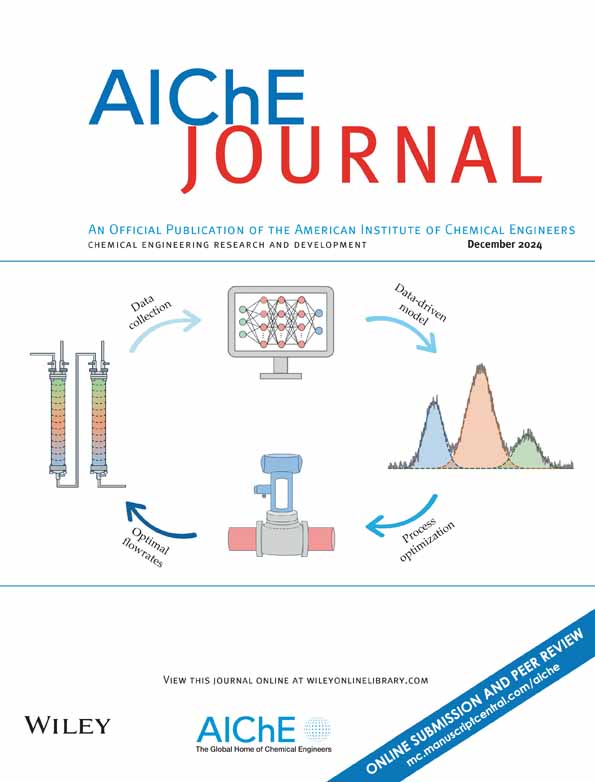嵌入多环芳烃的还原氧化石墨烯膜的结构-性能关系
IF 3.5
3区 工程技术
Q2 ENGINEERING, CHEMICAL
引用次数: 0
摘要
嵌入各种有机基团的氧化石墨烯(GO)膜在一系列水处理应用中显示出良好的潜力。然而,这些结构紊乱的膜的微观结构-功能性质关系尚未得到很好的理解。我们展示了一种实用的方法,以多环芳香族甲苯胺蓝O (TBO)作为功能插层剂,在氧化石墨烯膜上发展这种关系。我们使用固态紫外-可见吸光度和荧光测量来定量跟踪TBO在一系列TBO负载还原氧化石墨烯(rGO)膜中的排列。该研究揭示了TBO单体、横向和堆叠二聚体以及其他聚集体的不同排列方式的演变,作为TBO总体负载的函数。然后将这些微观结构与整体性质的变化联系起来,如层间d间距、渗透通量和溶质排斥。这些不同插层微观结构的特征解释了非直观的通量和截留趋势,这可以绕过通量和溶质截留的权衡。本文章由计算机程序翻译,如有差异,请以英文原文为准。
Structure–property relationships of reduced graphene oxide membranes intercalated with polycyclic aromatics
Graphene oxide (GO) membranes intercalated with various organic moieties have shown excellent potential for a range of water processing applications. However, microstructure–functional property relationships in these structurally disordered membranes are not well understood. We demonstrate a practical methodology for developing such relationships for GO membranes intercalated with molecular species, with polycyclic aromatic toluidine blue O (TBO) as an example functional intercalant. We use solid-state UV–vis absorbance and fluorescence measurements to quantitatively track the arrangements of TBO in a series of TBO-loaded reduced GO (rGO) membranes. This study reveals the evolution of diverse arrangements including TBO monomers, lateral and stacked dimers, and other aggregates, as a function of overall TBO loading. These microstructures are then correlated to changes in overall properties such as interlayer d-spacings, permeate fluxes, and solute rejections. The characterization of these different intercalant microstructures explains non-intuitive flux and rejection trends, which can circumvent flux and solute rejection trade-offs.
求助全文
通过发布文献求助,成功后即可免费获取论文全文。
去求助
来源期刊

AIChE Journal
工程技术-工程:化工
CiteScore
7.10
自引率
10.80%
发文量
411
审稿时长
3.6 months
期刊介绍:
The AIChE Journal is the premier research monthly in chemical engineering and related fields. This peer-reviewed and broad-based journal reports on the most important and latest technological advances in core areas of chemical engineering as well as in other relevant engineering disciplines. To keep abreast with the progressive outlook of the profession, the Journal has been expanding the scope of its editorial contents to include such fast developing areas as biotechnology, electrochemical engineering, and environmental engineering.
The AIChE Journal is indeed the global communications vehicle for the world-renowned researchers to exchange top-notch research findings with one another. Subscribing to the AIChE Journal is like having immediate access to nine topical journals in the field.
Articles are categorized according to the following topical areas:
Biomolecular Engineering, Bioengineering, Biochemicals, Biofuels, and Food
Inorganic Materials: Synthesis and Processing
Particle Technology and Fluidization
Process Systems Engineering
Reaction Engineering, Kinetics and Catalysis
Separations: Materials, Devices and Processes
Soft Materials: Synthesis, Processing and Products
Thermodynamics and Molecular-Scale Phenomena
Transport Phenomena and Fluid Mechanics.
 求助内容:
求助内容: 应助结果提醒方式:
应助结果提醒方式:


